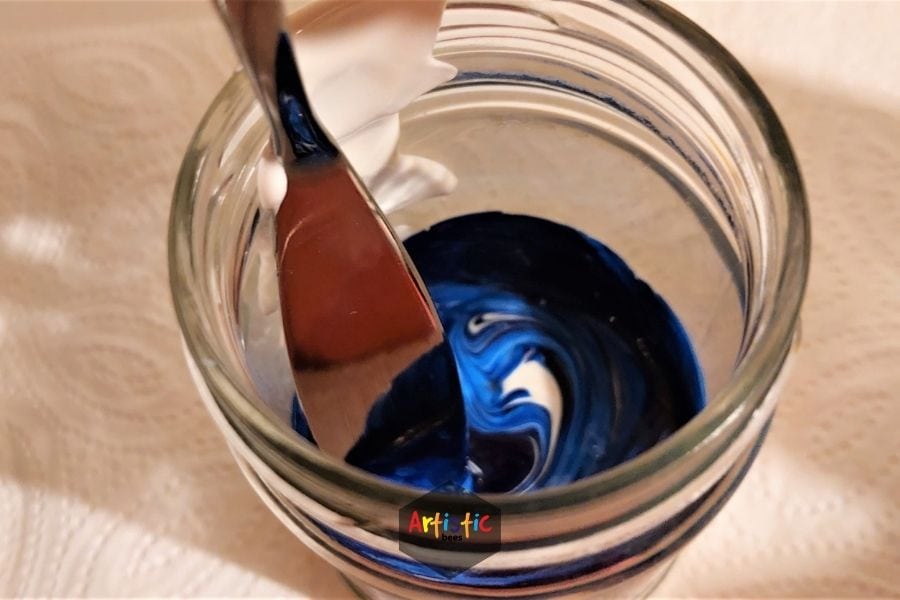If you are into painting, chances are a very common question has popped into your head at some point. The question is, can I use base paint without tint? Base paint by its name might refer to most of you as complete paint. But even a tiny amount of tint addition can bring significant changes in the texture and smoothness of the color.
Technically, you can use base paint without tint. But the results might not be up to your expectations. Even if you are looking for a white wall, the result turns pretty dull. In the case of thick base paint, the outcome is even worse. Dark bases are mostly translucent and don’t hide the underlying layer. Due to a lack of additional pigments, you cannot find the desired tone.
If you want to revitalize the existing color, using a base without tint can be a convenient option. In addition, it is a viable solution to touch up a scuffed or scratched wall. This is even a more straightforward, cost-effective solution. But if you want an intense, vibrant color, the untinted base paint is not a convenient option. Dive right into the article to know more about it!
Results Of Using Base Paint Without Tint
The base paint is generally a painting medium that welcomes additives. Base paint might look white in the package, but basically it is clear coat. A tint is an additive that unites with the base paint to form desired colors. Whenever you lay a base paint layer, you will find different results depending on the type of base paint.

Bases are usually four types based on how many additives they can absorb. Usually, bases 1 and 2 have the highest number of white pigments. So these are used on white and light-colored walls, respectively. Base 3 and 4 have fewer white pigments. These can absorb more colorants. They can be used for bright or dark-colored walls when tinted.
Base paints won’t be producing the desired color due to the absence of colored pigments. Moreover, any underlying color on your wall would bleed through an untinted base paint. So, in most cases, a base paint without tint is not preferred.
White Base (Base 1) Paint Works Over White Wall
If you use a white base or base 1 over a white wall, your result can be pretty satisfactory. Base 1 has the highest concentration of white pigments, so it would work well over your white wall. It won’t give you as sharp an outlook as a tinted base paint would. But, in a specific case, you can adopt this option if you want to revive your white wall.
You might need several coatings to get your desired look. Therefore, if you are just trying to restore the color of your old white wall, it is a sustainable option. It is also an excellent solution to cover any accidental distress on your wall.
Other Base Paints Can’t Cover White Walls Properly
If you are trying to cover a white wall with any other base paint except base 1, then it won’t be a wise approach. Under such circumstances, you might find patchy results. Even though bases have only white pigments, whites can be of differing shade. Furthermore, the result can be eye-soaring due to the difference in shades of white.
As a result, the resulting look won’t be even for your wall. The higher the number of bases, the lesser the amount of white pigment in it. Moreover, the base paints become more translucent when dried. So, the color won’t cover what is beneath the layer.
Walls Except White Color Won’t Get Coverage

If you have a different colored wall than white, then an untinted base paint would not be of any use. It won’t hide the color of the underlying layer. Most of the base paints are translucent and not opaque. It is a preferred method to use tinted base paint in such cases.
Base paints are not enriched with colored pigments. So you won’t get the desired color when it is untinted. To get your desired color, you can use the higher color bases matched with the tint you require. Base 4 has the least amount of white pigment. That is why it can absorb many colorants. It is wise not to use base paint without tint when you desire a bright color.
Benefits Of Tinted Paints

- Creating perfect color is more manageable with tinted base paints. Using tinted paints, you can create any color you want.
- It offers strong coverage for your walls, unlike base paint. You can apply tinted base paint and hide walls of any other color.
- It decreases the number of required finish coatings to attain the richness of rich, vibrant colors on your wall.
- It seals the porous surface. Furthermore, it adds a sharp, clean, and smooth finishing to the color on your wall.
- It is a quick process with instant access. The customer won’t have to wait for a long time and get good results.
- Tinting base paint is a great idea for saving both time and money. In addition, you are getting the color you desire.
- The customers can have their say in the manufacturing process. Thus, they can meet their demands and get adequate service.
Drawbacks Of A Tinted Paint
- Base paints have a small number of colorants that won’t affect the physical property. But, whenever a large number of pigments are used, various physical properties are hampered. Some of the negatively affected physical properties are:
- curing time
- full water resistance
- resistance to abrasion
- cleaners resistant
- burnishing and uniformity
- Due to the use of high levels of colorants, paints are often subject to washing away by prolonged rain or dew. In comparison, this drawback is found less in the case of a low level of colorants.
- Another drawback is the occurrence of surfactant bleed when using this product. On the surface, it appears to be slightly yellowish.
- The strongly tinted base paint is often sensitive to moisture. It would help if you kept this in mind when painting outer surfaces or damp regions.
Steps For Painting With A Base Paint Without Tint
If you are going for a simple base paint without tint, you don’t need much effort. You can follow a few simple steps to complete it.
Firstly, go to the local store to choose your desired shade. You will have to select the nearest matching color from the available swatches of color. If you have decided on a base paint color, you will have to buy a sufficient amount of it to cover your surface.
You will have to collect the required equipment for painting. Usually, you will need a painting brush, ladder, and cleaning cloth. After you are done with these preparations, start painting and complete your job.

Conclusion
So, if you want to refresh your white walls, go with base paint without a tint. But if you want more substantial coverage over a colored wall, then choose a tinted base paint. The addition of tint to your base paint can enhance the color to a great extent. It even gives a strong, vibrant, and clear outlook.
So, instead of asking, can I use base paint without tint, opt for a tinted base paint if you want a deep, vibrant color. You can skip the tint on your base paint if you only want to restore your white walls. Don’t mislead yourself with the paint in the termbase paint. Look before you leap into color. Thank you for going through the article. Good luck!



